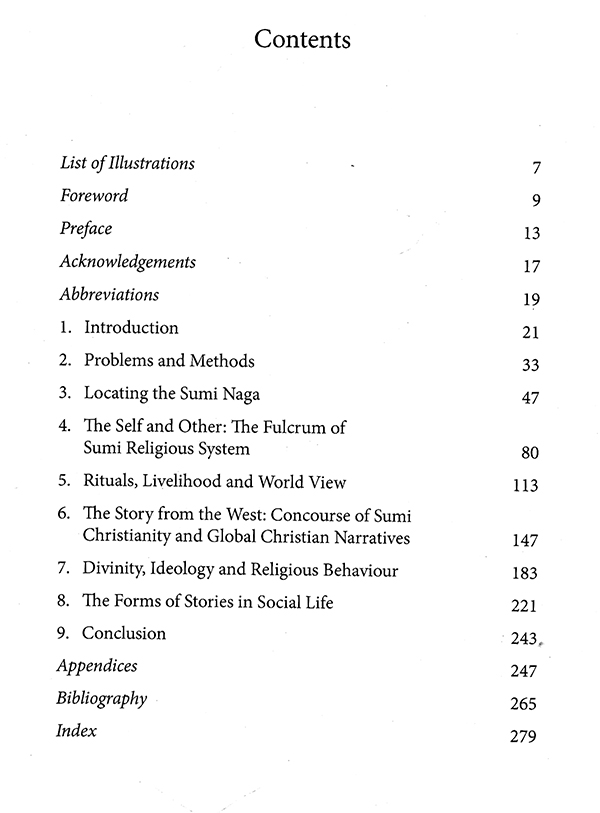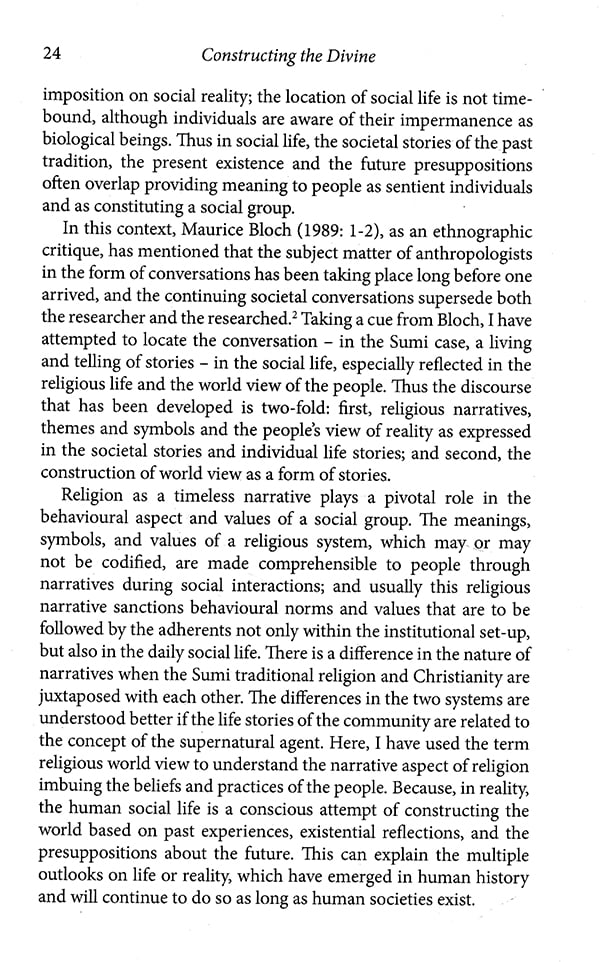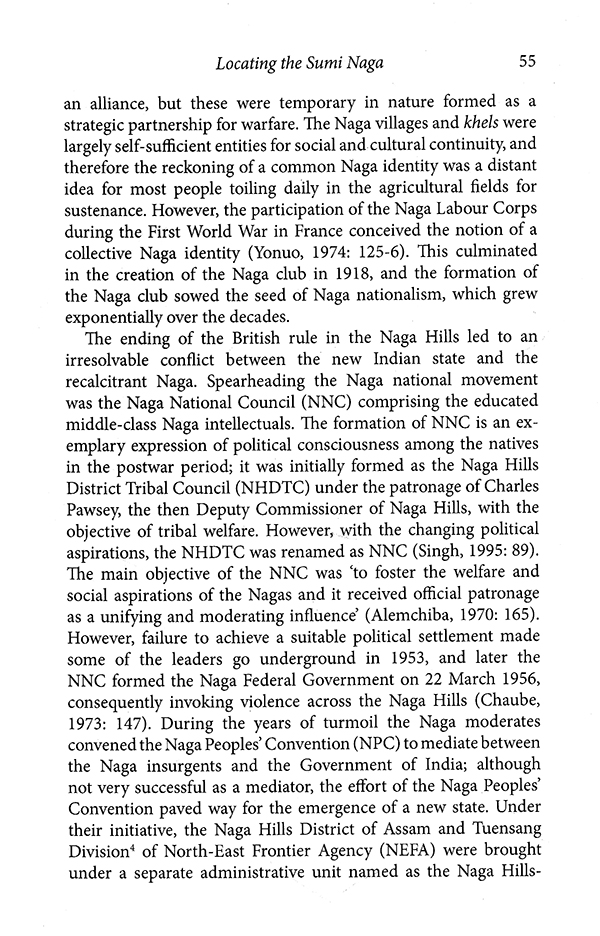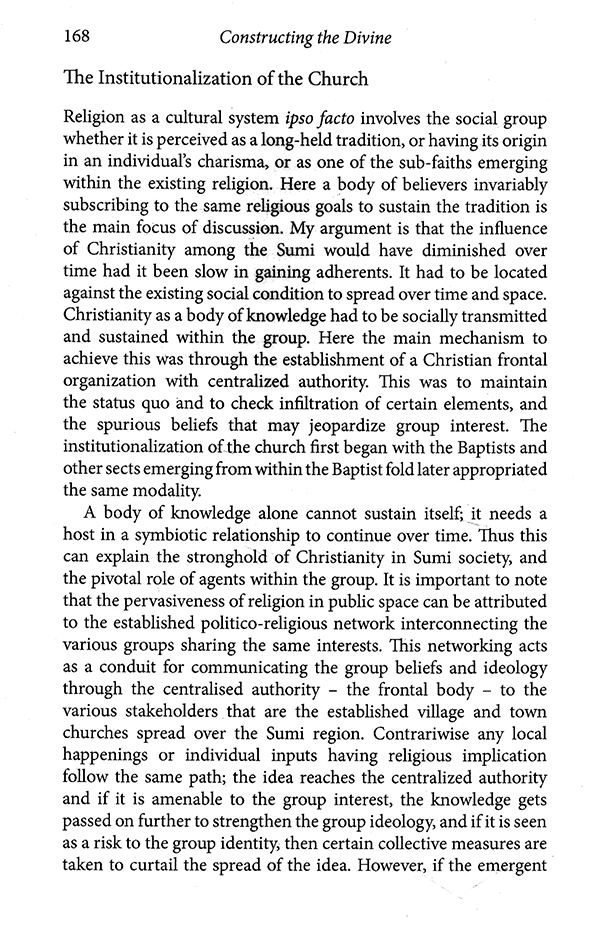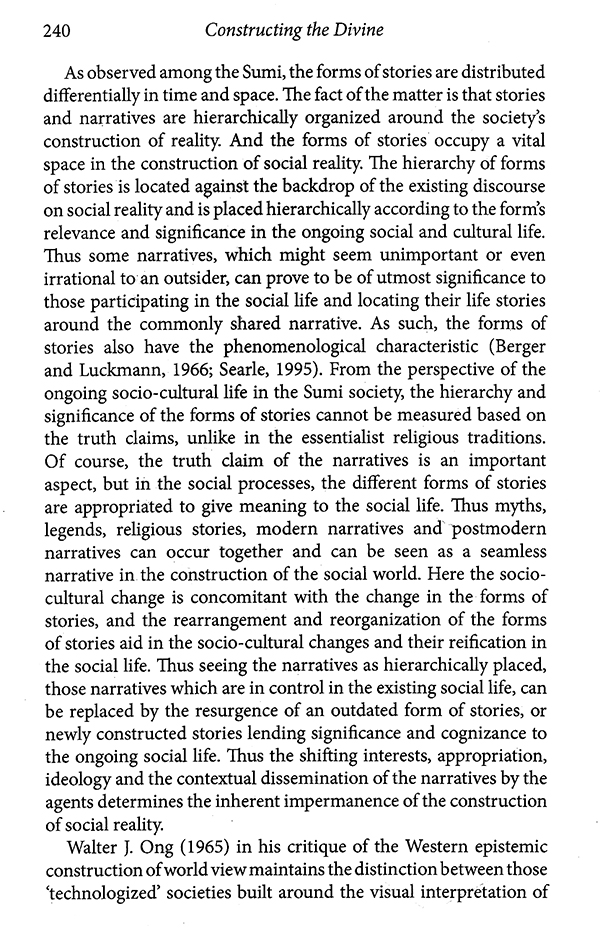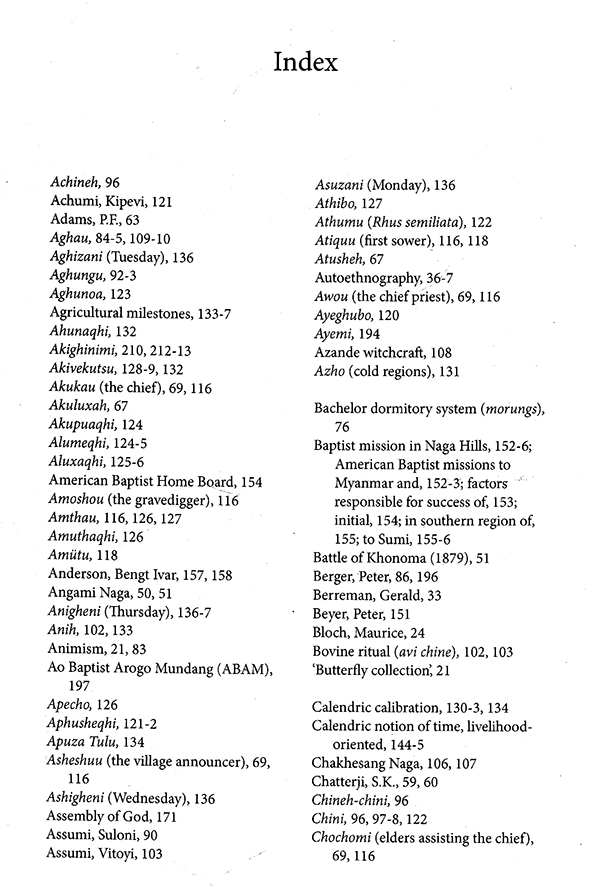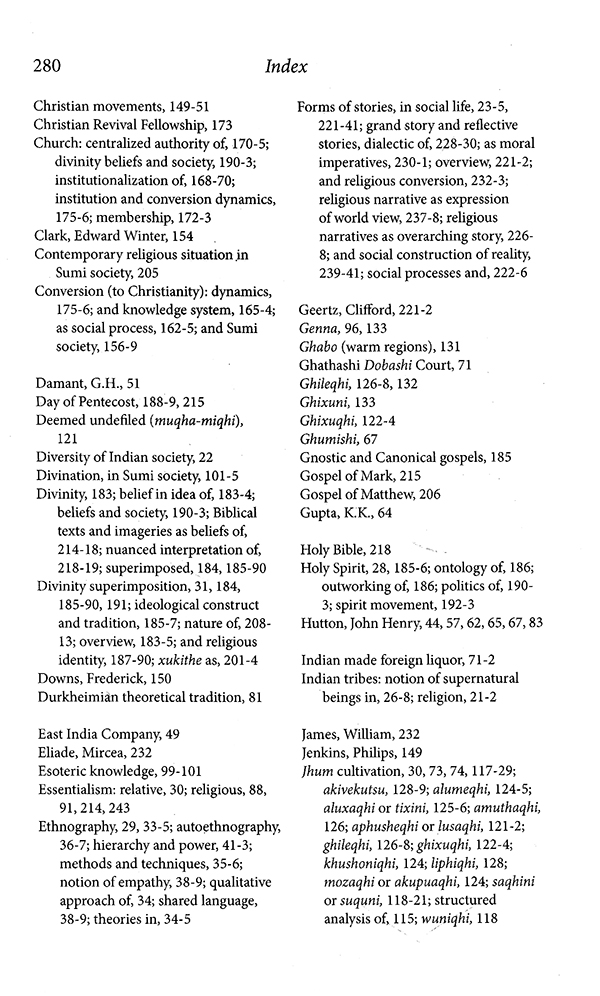
Constructing the Divine (Religion and World View of a Naga Tribe in North-East India)
Book Specification
| Item Code: | NAZ250 |
| Author: | G. Kanato Chophy |
| Publisher: | Manohar Publishers and Distributors |
| Language: | English |
| Edition: | 2019 |
| ISBN: | 9789388540018 |
| Pages: | 288 (24 B/W Illustrations) |
| Cover: | HARDCOVER |
| Other Details | 9.00 X 6.00 inch |
| Weight | 470 gm |
Book Description
From being characterized as 'primitive tribe' in the colonial imagination to become predominantly practitioners of the American Baptist faith, the Sumi Naga - formerly known as the Sema Naga- in the North-East Indian state of Nagaland have come a long way ever since this Naga tribe encountered the white man toward the latter half of the nineteenth century.
This book in a way chronicles the transition of Sumi society from the period of colonial contact up to the present-day context. A critical understanding of Sumi society and culture is at the heart of the narrative, and the analysis of Sumi religion and world view remains the main thrust of this book. It is argued that the Sumi, who are overwhelmingly Baptists, are faced with new religious issues which has brought about not only schismatic divisions but also rendering ebullience to religious life, and that a new discourse has emerged in Sumi religion. The author positions himself as an 'insider', and in doing so has given a reflexive account of Sumi religious life, meanwhile substantiating the arguments and find-ings in the light of contemporary theoretical developments. The volume brings out compelling evidence that religion significantly shapes the daily life of the Sumi. It offers a detailed ethnographic study of Sumi religion and world view, as the Sumi Naga was seldom studied in-depth in the post-Independence period.
G. Kanato Chophy is a social anthropologist with a doctorate from the University of Delhi. He is a Fellow of the New India Foundation (2017-18), Bangalore, and is currently working on a book about the Naga Baptists.
Restudy is gaining popularity in fieldwork-based disciplines like anthropology and sociology. The trend at least in India is synonymous with 'village study, a post-Independence phenomenon carried out by researchers to garner new insights into the fast-transforming social, cultural and economic life of caste-based villages functioning as whole societies. This approach has extended even to the social formation called tribes (most of whom were studied during the colonial period), albeit not in the strict sense of a restudy like the one Oscar Lewis carried out in a Mexican village - Teportlan - formerly studied by Robert Redfield. For one thing, tribal identities, social relationships and economic interdependence, in the present situation, cut across villages, regions, and even states as the assertion of tribal identity is getting stronger and ever expanding. This situation renders the earlier conception of a small-scale tribal community as a closed and self-sufficient system redundant, if not preposterous. Thus revisiting ethnographic subjects like the Naga tribes need not be seen only as a critique of colonial representation, but even the indigenously developed methodology and approaches need to be tested against a wide range of communities showing prodigious diversity.
Reading through Kanato Chophy's exemplary work on the religious beliefs and practices of the Sumi Naga, a community of people predominantly distributed in the districts of Zunheboto and Dimapur of Nagaland, I was instantly reminded of a lecture I heard while attending the Baptist Centenary Celebrations in the town of Kohima in November 1985. The speaker, a pastor, in his imposing exhortation in English, told the audience representing different Naga communities, who had come in their traditional . attires to the capital of Nagaland from different districts, and also from the state of Manipur, that before the advent of Christianity, they were all pagan, reposing faith in a myriad of punitive, diabolical, unkind, and demanding spirits. The hill-dwellers, as the people were called, were afraid of these 'supernatural beings' grounded in the belief that if they fell short of complying with the impositions of the spirits, they would be doomed in reality.
Their religion, the speaker continued, was based on 'fear, and thus, they were overwhelmed with mirth, when they found them under the patronage of the ‘religion of love’ in which God was compassionate, nurturant, merciful, and benevolent. It was not just the 'persona of God' that suffused people with joy, but also, the material changes that indiscriminately flowed from the 'institutions of God, namely the church, the school, and the hospital, which transformed the lives of people, ensuring their decent and dignified existence, free from misery, scarcity, isolation and suffering. Conversion to a 'world religion' that Christianity is, made people, who hitherto were cut off from the wider world, a part of the vast Christian congregation. Just to add to what the pastor said, this facilitated the 'modernisation' of the local 'tribal' communities - they learnt English, which soon was going to acquire the status of an international language, got their children admitted to mission schools, obtained scientific cures of their illnesses, and imbibed the values of equality, liberty, open-mindedness, and the modern outlook.
**Contents and Sample Pages**